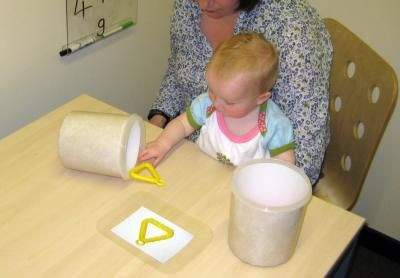Baby Toys Recognized As Different From Photographs As Early As 9 Months Old

When does a baby begin to understand that the realistic drawing of a striped ball in the picture book relates to an actual ball, the one his sister bounces on the floor? In a new study, researchers discovered that by the time babies are 9 months old, they have begun to make the connection between pictures and real objects. "For parents and educators, these findings suggest that, well before their first birthdays and their first words, babies are capable of learning about the real world indirectly from picture books, at least those that have very realistic images like photographs," said Dr Jeanne Shinskey, of the Department of Psychology at Royal Holloway, University of London. The study was conducted by an international team of scientists at Royal Holloway and the University of South Carolina and published in Child Development.
Words and Pictures
In The Uses of Enchantment, Bruno Bettelheim, a Freudian psychologist, argued that fairy tales are helpful because they allow children to come to terms in a healthy way with anger, sibling rivalry, fear of abandonment, and other anxieties faced on the road to maturity. In particular, he discusses violence, such as when Cinderella’s two sisters cut off their toes and heels to fit into the famed glass slipper. Bettelheim believed stories containing violence meet a child’s psychological needs; because children feel real rage, they need to understand others do, too, and if this is not clear in the stories children read, they may grow up believing they alone are monsters for feeling such ugly emotions. That said, Bettelheim noted two key issues regarding violence in tales. First, he claimed that when a fairy tale is read aloud, a child pictures only as much of the story as he or she is ready to accept. Second, he separated out images from word-stories when he argued that an image depicting violence in too strong a manner for a given child could cause harm.
If you accept Bettelheim’s theories, then the current research is key: When exactly do babies begin to make the connection between images and the real world?
To better understand the ability of babies to transfer knowledge learned from a photo to an actual toy, the team of researchers familiarized 30 babies (8- and 9-month-olds) with a life-sized photo of a toy for about a minute. The babies were then placed before the actual toy they’d seen in the picture as well as a different toy, while researchers watched to see which one the babies reached for first. In a first variation on this experiment, the research team tested infants' simple object recognition for the target toy by keeping both objects visible, drawing infants' attention to the toys and then placing both of the toys inside clear containers. In a second variation, the team tested infants' ability to create a continued mental idea of the target toy by drawing the babies’ attention to the toys and then placing both of the objects inside opaque containers.
When the toys were visible in clear containers, babies reached for the one that had not been in the picture; to the researchers this suggested that the infants recognized the pictured toy and found it less interesting because its novelty had worn off in comparison to the new toy. But when the toys were hidden in opaque containers, babies reached more often for the toy that had been in the photo. In this case, the researchers concluded that the infants had formed a continued mental idea of it.
“These findings show that one brief exposure to a picture of a toy affects infants' actions with the real toy by the time they reach nine-months-old,” Shinskey stated in a press release. “It also demonstrates that experience with a picture of something can strengthen babies' ideas of an object so they can maintain it after the object disappears - so out of sight is not out of mind." Interestingly, color had no effect on the outcome of either experiment. Infants were able to make the correct picture-to-object transfer, even when shown a black-and-white photograph of a colored toy.
Source: Shinskey JL, Jachens LJ. Picturing Objects in Infancy. Childhood Development. 2014.



























